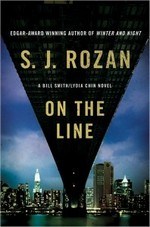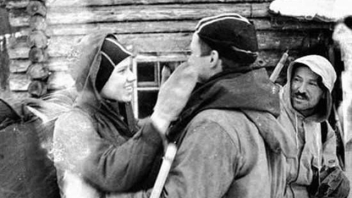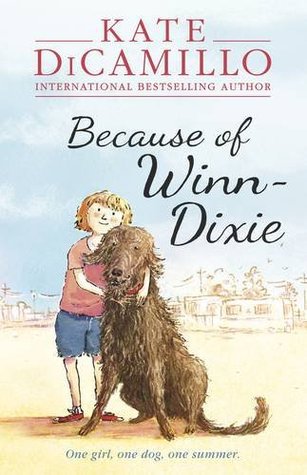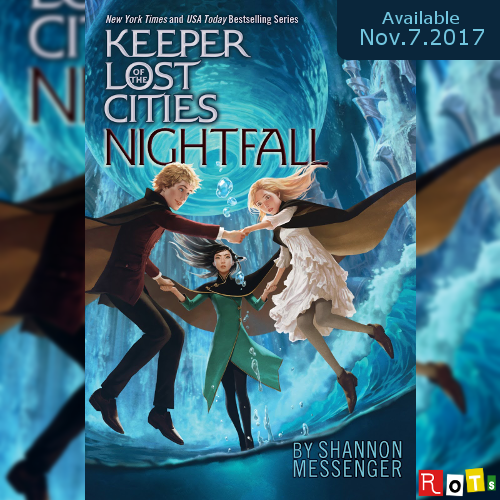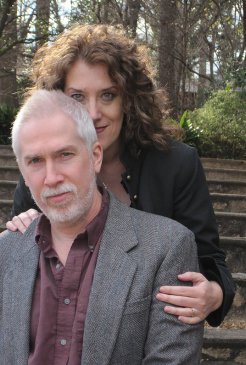 From the moment Captain America punched Adolf Hitler in the kisser, comic book readers have enjoyed crossovers. Who doesn’t like to see the Justice League mix it up with the Avengers, or Darkseid go toe-to-toe with Galactus? Jean-Luc Picard meeting Professor X was pretty cool too.
From the moment Captain America punched Adolf Hitler in the kisser, comic book readers have enjoyed crossovers. Who doesn’t like to see the Justice League mix it up with the Avengers, or Darkseid go toe-to-toe with Galactus? Jean-Luc Picard meeting Professor X was pretty cool too.
When the Green Arrow and the Flash made the transition to TV a few years ago, fans didn’t have to wait long before the two shows took a tip from the comics and started to intermingle storylines. The ensuing crossover episodes hooked viewers and created an inclusive and compelling FlarrowVerse.
Now the same thing has been done in prose format. Authors Clay Griffith and Susan Griffith have written a pair of novels that engage the casts of The Flash and Arrow in a big, complicated storyline. Read our reviews of The Flash: The Haunting of Barry Allen (here) and Arrow: A Generation of Vipers (here).
What follows is our conversation with the authors about tie-in novels, serial fiction, superhero prose fiction, and their particular and unique writing process.
SuperheroNovels: We’re sure you made a lot of fans happy with your recent two-novel Flash/Arrow crossover series. But what was your main priority when you started the project? What did you ultimately hope to accomplish?
Clay Griffith and Susan Griffith: Our first goal, obviously, was to write a book that was fun and exciting to read, and highlights the character, keeping them as true as possible. You always keep an eye toward writing a tie-in novel so that it can be accessible to a general reader even if they’ve never watched The Flash or Arrow.
But the main goal with tie-in work is to write a solid book that will expand the experience of the fans. Give them the elements from the show that they love, and then give them more. Any TV show is somewhat limited by time and budget. Sometimes it just hints at a nice character moment, but then it has to keep moving, leaving the viewer wanting to spend more time with Barry West and Oliver Queen or Joe and Iris West.
We don’t have that constraint in a book. We can do more character introspection; let the reader feel what Barry feels. We can play with character team-ups and combinations. We did a fun scene between Caitlin Snow and Iris and a father moment between Joe and John Diggle. Plus the action and fights can be as big as we want. There’s no producer telling us that we don’t have the FX budget for more than one giant multi-character battle scene.
So ultimately the goal was to write the book as if it was the coolest, biggest, most emotional episode of the show ever.
SN: In both of your books, characters jump off the page in delightful ways – Felicity Smoak in particular. In our opinion, she’s more funny and likeable in your Arrow novel than she is currently in the TV show. How satisfied are you with your interpretations of these familiar characters?
CG/SG: We’re fans of the shows, both The Flash and Arrow. We love these characters. So our intention was to make the characters as close to what the shows present as we could.
Of course, with serialized shows, characters are always in flux. Felicity Smoak is a prime example. Her arc is dramatic, going from an introverted computer geek to superhero Overwatch, and all the ups and downs in between. Felicity is different in season five than she was in two or three.
Since we were writing the books while the seasons were advancing, and the characters changing, we had to do our best to capture her essence without necessarily pinning her to a specific moment in her developmental arc. We chose to focus on what we loved best about the character, her resourcefulness and wit. That approach went for all the characters. We really tried to make them as close to the show as possible and then give them each an opportunity to shine.
We’ve been really happy with the feedback we’ve gotten from Flash and Arrow fans; they value what we’ve done with the characters that are beloved to all of us. This makes us believe we got pretty close to the mark we were shooting for.
SN: We live in a hyper-connected world these days where movies, TV, comic books, and video games all share the same content. Do you think we’re in a golden age of tie-in novels?
CG/SG: We may not be living in a golden age of tie-in novels, but we’re certainly living in a golden age of multi-media or trans-media. As you say, we can consume so many of our favorite properties in one or in many medias, all with slightly different spins on the material. It can be totally immersive. And typically they’re all pretty well done. Producers finally realize that if you give genre material the respect it deserves, fans will flock to it.
In terms of tie-in novels, we’ve consumed tie-ins and novelizations for a long time. We go back to the 1960s and James Blish’s novelizations of the original Star Trek series published by Bantam Books. And Whitman Books used to do great novels aimed at younger readers based on shows like Combat or Man From U.N.C.L.E. The greatest novelization/tie-in of all time was Star Wars. We both read the paperback novel before the movie even came out. And the 1980s and 1990s were the era of fantastic and influential Star Wars, Star Trek, and D&D book series, to name just a few properties.
SN: Superheroes are all over the place now. Characters like Deadpool and Luke Cage have been wildly successful on the big screen and the small screen. Despite strong efforts from authors like Eoin Colfer, Carrie Vaughn, and Brandon Sanderson, readers have been somewhat lukewarm to superhero prose fiction. Do you think superhero novels will ever catch fire in the same way as other media?
CG/SG: That’s a really good question, and we’ve talked about it before because we’d love to write original superhero prose fiction. Obviously there’s a built-in market for prose fiction using established characters like Superman or Batman or Spider-Man (or Flash and Green Arrow!). But in terms of superhero prose not associated with established comic book/TV characters, then it certainly hasn’t been a giant success. There are excellent examples, and you list a few. You could also mention George R.R. Martin’s Wild Cards series that has existed for decades. So there certainly is some superhero prose out there.
We’ve had editors tell us that they’re not looking for superhero fiction because it doesn’t sell. Of course we heard the same thing about steampunk, and it still does okay.
We would argue that there is actually more superhero prose out there than you think. A lot of fantasy and urban fantasy novels have strong superhero influence. The characters just don’t follow the expected comic tropes of costumes and capes and crimefighting.
Our own historical urban fantasy series Crown & Key has a superhero vibe to it. We used to pitch it as “Charlotte Bronte’s Avengers.” The characters are magical, but they still have superhuman abilities and fight evil as part of a team.
However most “superhero” prose these days is an extension of action-fantasy or military sci-fi. The characters use magical or genetic “powers” in paramilitary groups to fight other “super-powered” terrorists or enemy combatants. The reason original comic book superheroes in the 1930s immediately fought crime was because crime was an overwhelming social concern. Now it’s terrorism and political instability. So that’s what the new breed of prose superheroes fight. And they’re more likely to wear combat fatigues than spandex.
But in terms of superheroes as we think of them in comic books, that has struggled to find a strong home in prose, considering how popular they are in movies and TV. We actually think that if a breakthrough is going to come, it will happen in two places. The first is the romance genre, blending romance and fantasy/action with superhero elements. The second is in the world of self-publishing. It’s actually already happening there. Fans who want superhero prose, and we believe there are a lot of them out there, are looking to a growing library of self-published material to fill that need.
SN: Let’s talk about your process a little bit. Not only are you writing partners, but you’re married too. We have to ask, how does the work get done? And how do you resolve writerly conflicts when they pop up?
CG/SG: We’ve been writing together now for nearly 20 years so a lot of our collaboration style is second nature to us. For a large project like a novel, we start with the plot. We have to plot in detail because there are two of us writing and we have to know what the other is working on at all times. You can’t have one author killing a character in chapter six while the other author is using that same character in chapter 10. So we work out the plot together via lots and lots and lots of conversation and notes passed back and forth. Eventually we have character bios and a chapter-by-chapter outline. Obviously elements can change with the writing, but at least we know where we intended to be, and that gives us a touchstone for changes.
Once we have the plot, we divide up the material and start writing. We try not to get too far ahead of each other. We don’t want one author to come up with a brilliant idea to change the story in chapter five and the other author is already finishing chapter 22. That would require a lot of rewriting.
So communication is key. We are always talking and discussing ideas for any slight change to the plot in order to understand how that change will cascade throughout the entire book, for good or bad.
As chapters are written, we pass them back and forth for editing and rewriting many times. The goal is to create an authorial voice that is unique. Some collaborators highlight the differences in the collaborators’ voices, but that’s not our style. We don’t want readers to know who wrote what. We want a single consistent voice that represents “Clay and Susan Griffith.”
Conflicts do come up while writing. Depending on the project, they can come up a lot, or a little. Actually, our Flash and Arrow novels probably had fewer conflicts than any other set of books we’ve ever written. That had to do with the fact that we weren’t creating and defining new characters, we were just interpreting existing characters for our own purposes. But when conflicts arise, the only way to solve them is to talk. And talk more. And talk even more. Sometimes we even talk with raised voices because we’re both very passionate about what we do. The moment one of us says, “I don’t care. Do what you want,” that’s the end of creative collaboration.
Theoretically, with every project, one of us is the lead. Usually it’s whoever made the contact that got the job or whoever came up with the original concept for the story. If there ever comes a disagreement we simply can’t settle, we could invoke the “nuclear option” and the lead will lay down the law. End of argument. That has never occurred and hopefully will never occur. Once you invoke the nuclear option, there’s no going back. It’s no longer a true collaboration; it’s a boss and employee. And we don’t want to work that way.
SN: What’s next for you, superhero, vampire, steampunk, together, or separately? If the opportunity presented itself, would you be interested in penning more Flash and Arrow novels? How about books based on other CW shows like Supergirl, DC’s Legends of Tomorrow, iZombie, or Black Lightning?
CG/SG: We are thinking about several projects for the near future, but we don’t have contracts for anything specific yet. Likely it will be in the historical fantasy realm, which is the genre we worked in with Vampire Empire and Crown & Key. We would like to write some more traditional epic fantasy or sword & sorcery too at some point; we’re big fans of those genres.
Naturally, we would love to write more Flash or Arrow (or other DC properties) in the future. We had a blast on the two we just did. Tie-in work is fun on the right property. It’s great to have the chance to contribute in a small way to the mythology of these characters that you’ve enjoyed on TV and in the comics before that. But also, there are so many hours in the day and we don’t want to neglect our own ideas and characters.
Advertisements Like this:Like Loading... Related
